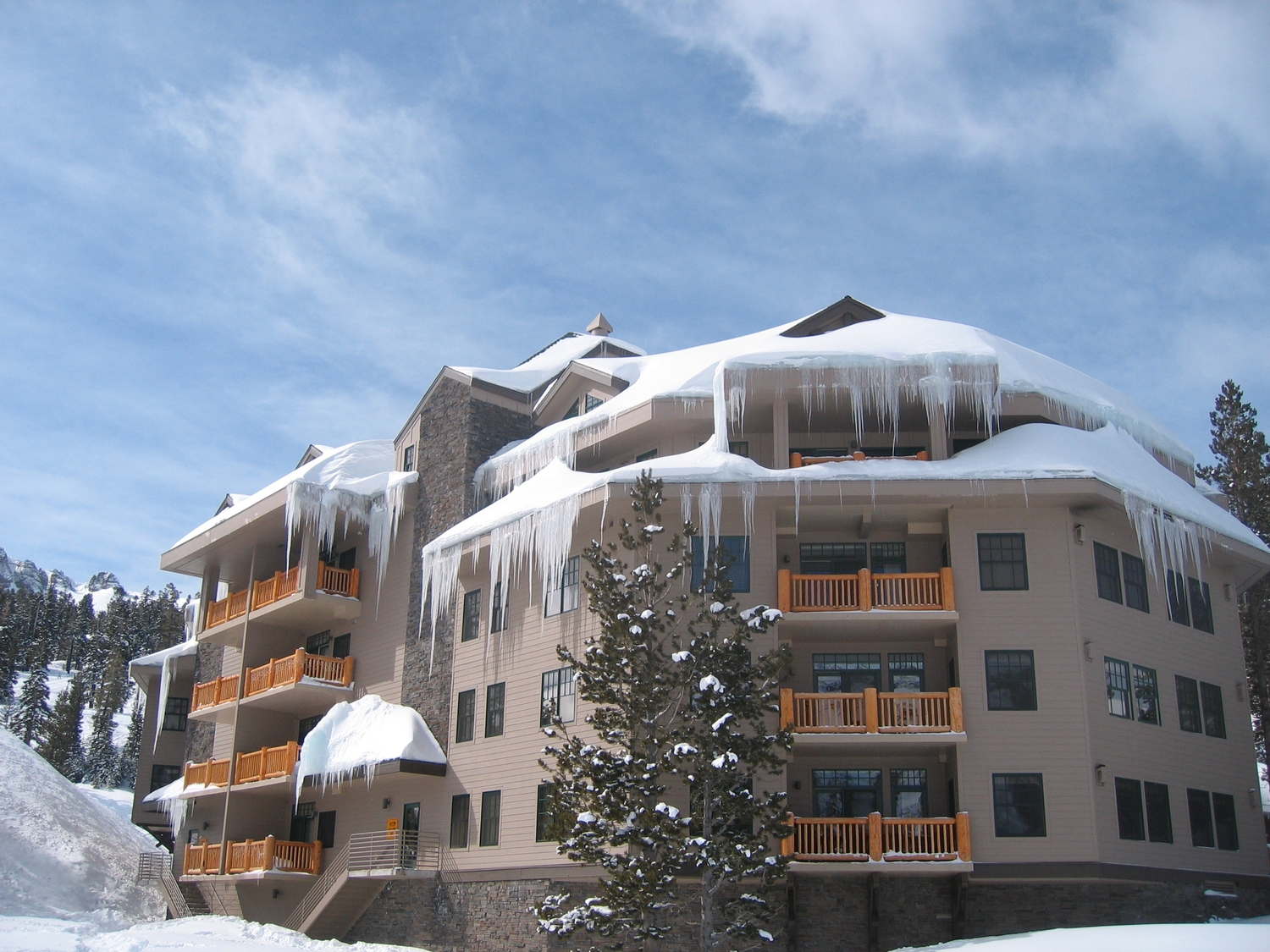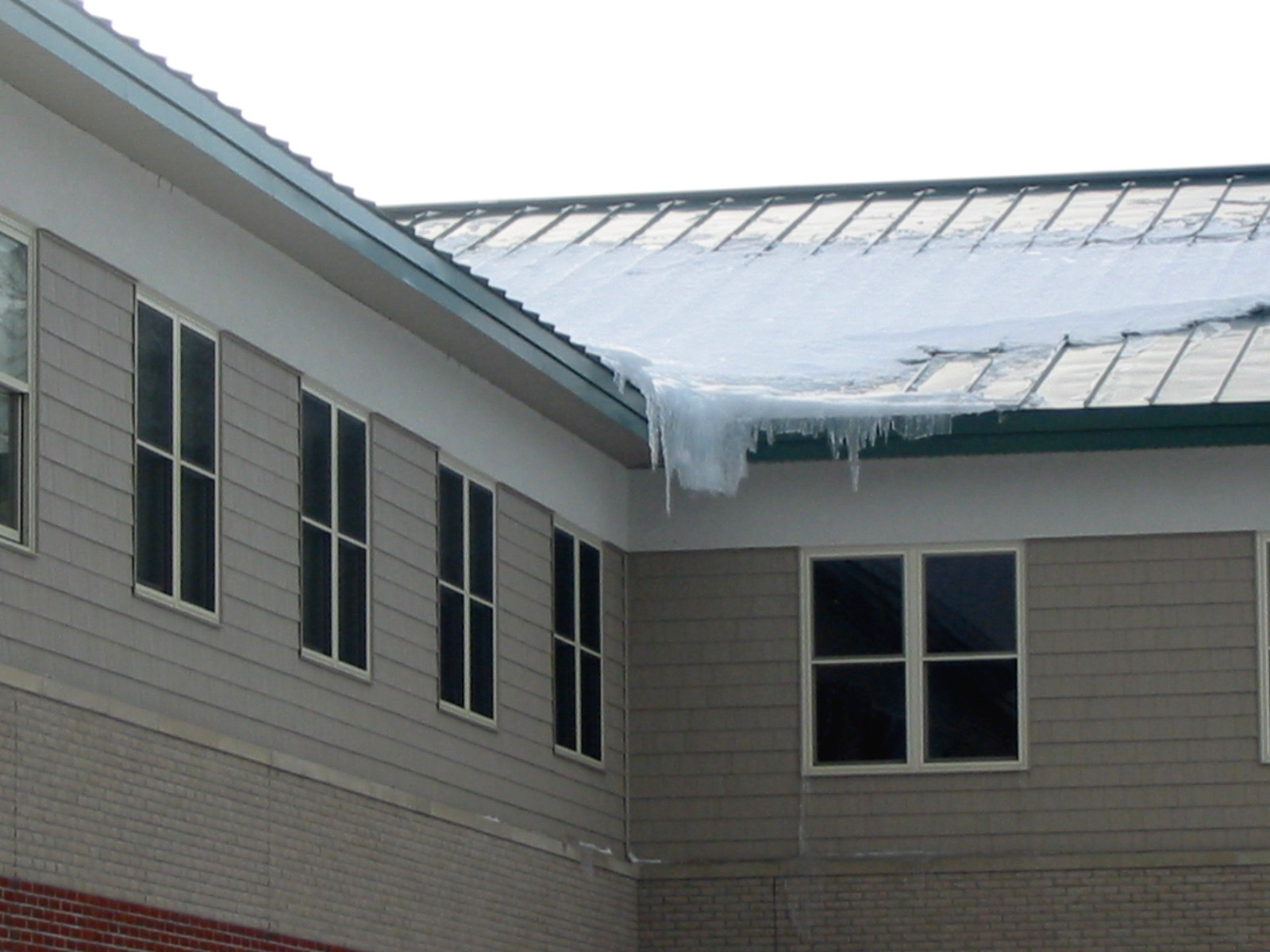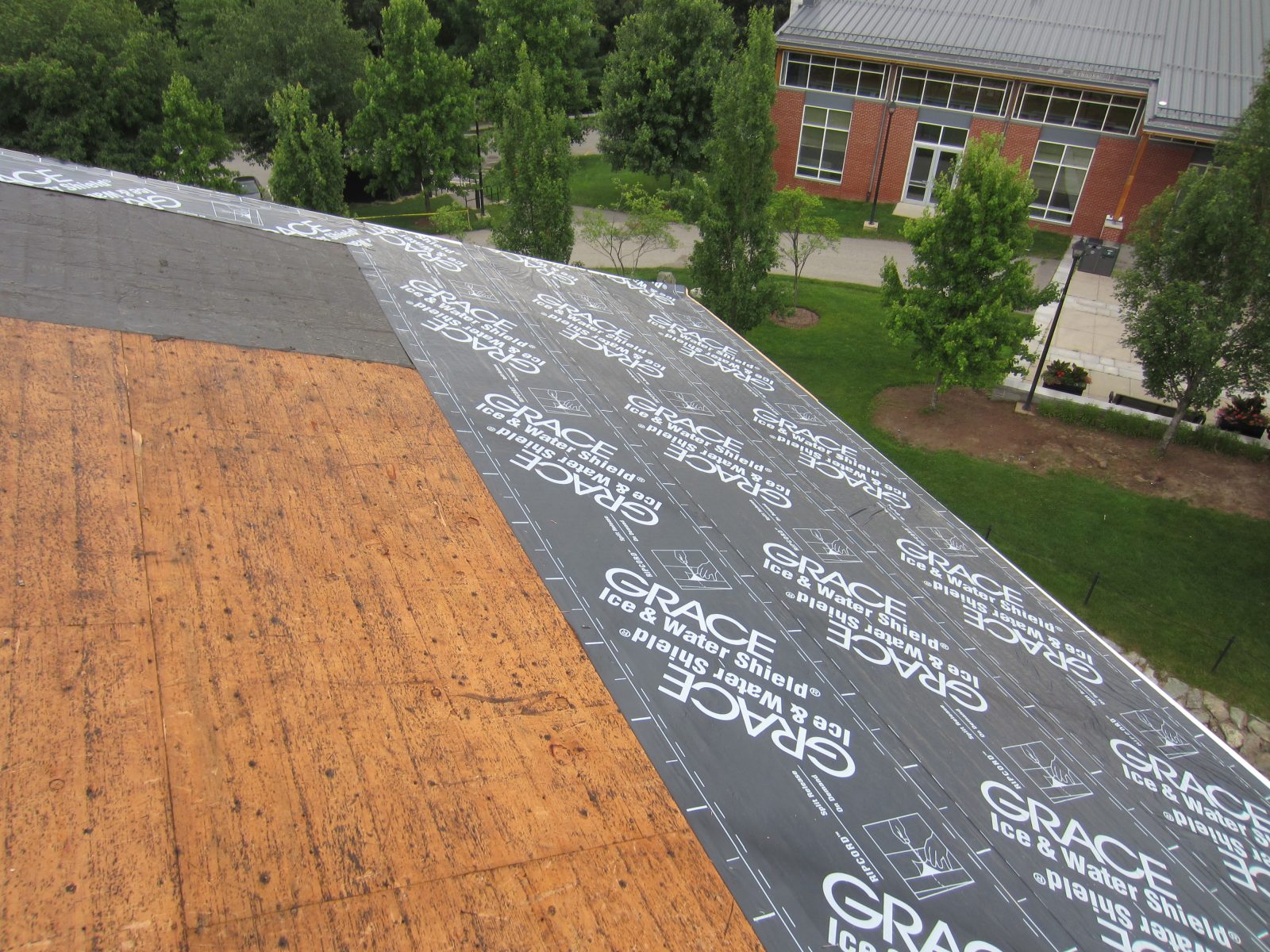Ice Dams: What You Should Know

Building owners and managers must be concerned about heavy snowfall on their roofs for two major reasons: increased roof loading and ice dams. Ice dams not only concentrate snow and ice loads at the eave, but can also contribute to water leakage into buildings. Unaddressed water leakage can cause building components to deteriorate and may not stop until the snow and ice is removed from the roof.

Ice dams form when heat loss through the roof melts snow on the roof. The meltwater flows to the cold eave overhang where it refreezes. This ongoing process causes ice to build up and create a dam, eventually preventing upslope meltwater from draining off the roof. If proper ice dam protection is not provided, ponded water can back up under the roofing system and cause leakage into the building. Gutters can also contribute to ice dams when meltwater freezes inside one and prevents additional meltwater from draining off the roof.
Design Methods for Ice Dam Protection
A properly designed roof can protect the building against ice dams and their associated leakage. There are several effective methods available to building owners and managers:
- Ventilated Roofs: The most effective way to control ice dams is to keep the roof deck cold enough to prevent snow from melting, which can be accomplished with ventilation beneath the roof deck. Two common designs for vented roofs are cold attics and vented compact roofs. An unconditioned (cold), vented attic uses insulation installed in the attic floor and vents the attic space to the outside. A vented compact roofing system uses vent channels installed between the insulation and roof sheathing. Adequately sized eave and ridge vent openings are required for either design to function properly.
- Membrane Ice Dam Protection: When installed correctly, ice dam protection applied to the roof deck and sheathing below the primary roofing materials can control leakage associated with ice dams. Membrane protection can control leakage, but does not prevent ice dams from forming. In these cases, the membrane must be detailed properly at critical areas (e.g., eaves, valleys, and dormer rising walls).
- Metal Roofs: Metal roofing, popular in many snowy areas, can eliminate the source of meltwater by allowing snow to slide off the roof. Metal roofing can also be limited to an apron on the lower part of the roof near the eave to help snow slide off. Snow guards and roof geometry (e.g., valleys) can collect and hold snow on the roof, allowing ice dams to occur in these areas.


Good roof designs and proper construction techniques can prevent most ice dams from forming and prevent meltwater from entering buildings.
- Super-Insulated Roofs: Increasing roof insulation can slow the formation of ice dams by limiting heat loss and airflow through the roof. Super-insulated assemblies typically consist of closed-cell, spray-applied urethane foam insulation installed between the roof rafters to achieve an R-40 to R-60 rating. The closed-cell foam also acts as an air barrier to limit the amount of heated air that reaches the underside of the roof deck.
- Snow Melt Systems: These systems typically consist of thermostatically controlled, low-voltage wires attached to the roof at the eave and/or set in gutters. Their function is to create paths for the meltwater to flow off the roof; they are not intended to melt all the snow and ice at the eave. For these systems to be effective, heating cables need to continue into the gutter and downleaders and extend to a point where ice build-up will not present a slipping hazard or inhibit further meltwater drainage. These systems are often prone to damage during winter and require frequent maintenance to keep them running properly.

Conclusion
Ice dams and related roof leaks are common in colder climates, despite the industry’s vast knowledge of why they occur and how to prevent them. Good roof designs and proper construction techniques can prevent most ice dams from forming and prevent meltwater from entering buildings. On existing buildings, the best methods for combating ice dams depend on the building design, the owner’s tolerance for leaks, and their financial resources.